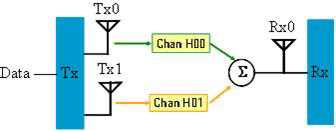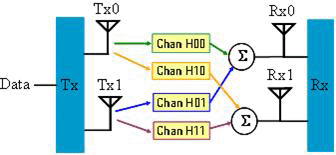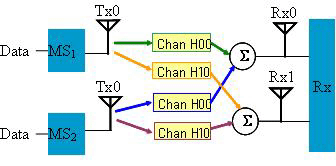Supported STC/MIMO/SISO Mode for
DL-PUSC
Parameter Settings
(In System Configuration Wizard)
Simulate Transmitter Antenna Signals
2-antenna
2
-
Multiple Antennae
Two Instruments
Off
Matrix A
Downlink Only (TDD) or
Downlink Only (FDD)
2-antenna
2
2
Multiple Antennae
Two Instruments
Off
Matrix B
Downlink Only (TDD) or
Downlink Only (FDD)
SISO
1
1
Single Antenna
One Instruments
Off
None
Downlink Only (TDD) or
Downlink Only (FDD)
Simulate Receiver Antenna Signals
STC (Matrix A), one-antenna

2
1
Single Antenna
One Instruments
On
Matrix A
Downlink Only (TDD) or
Downlink Only (FDD)
STC (Matrix A), 2-antenna

2
2
Multiple Antennae
Two Instruments
On
Matrix A
Downlink Only (TDD) or
Downlink Only (FDD)
MIMO (Matrix B), 2-antenna

2
2
Multiple Antennae
Two Instruments
On
Matrix B
Downlink Only (TDD) or
Downlink Only (FDD)
SISO
1
1
Single Antenna
One Instruments
On
None
Downlink Only (TDD) or
Downlink Only (FDD)
